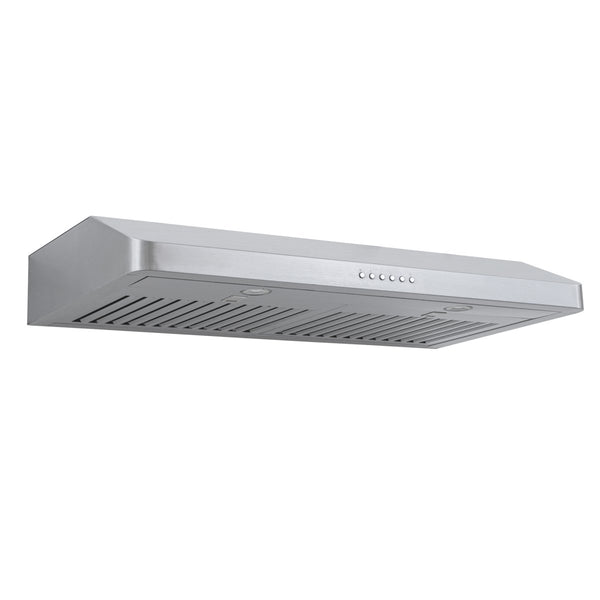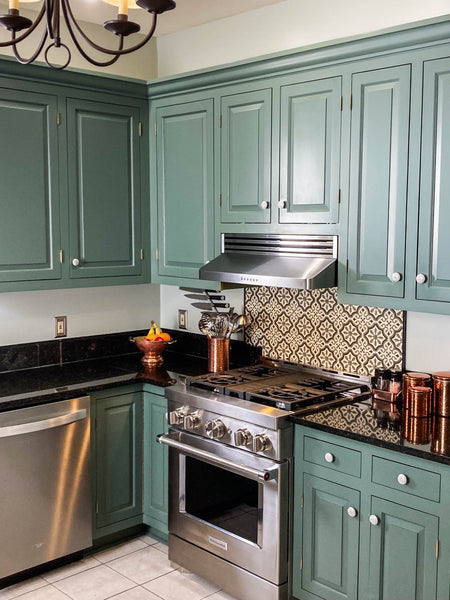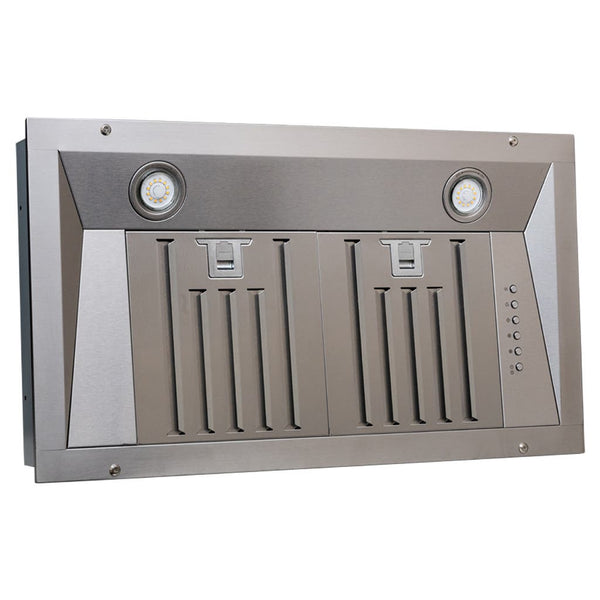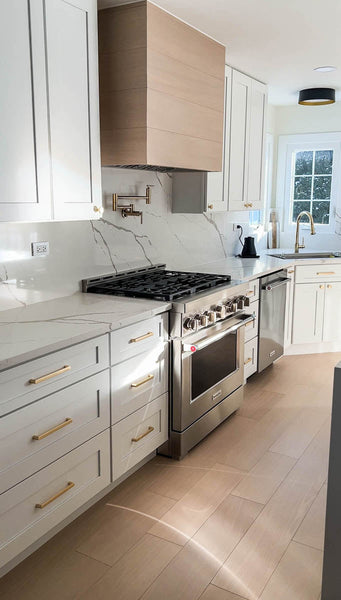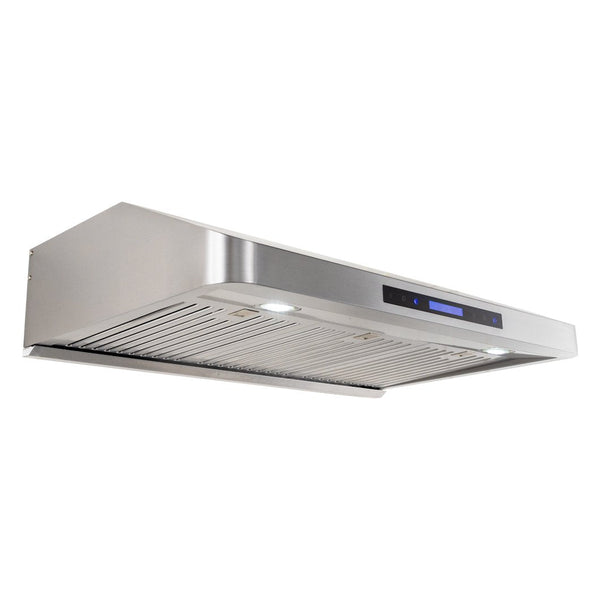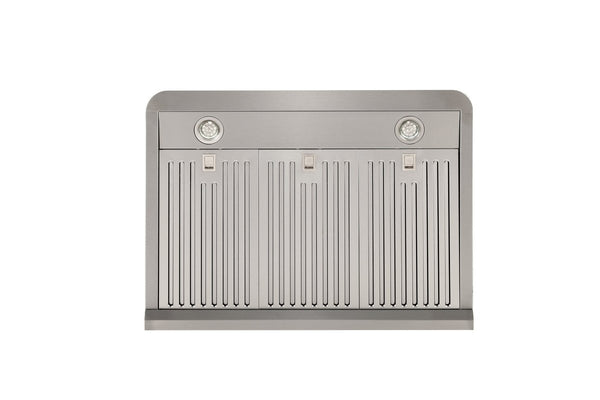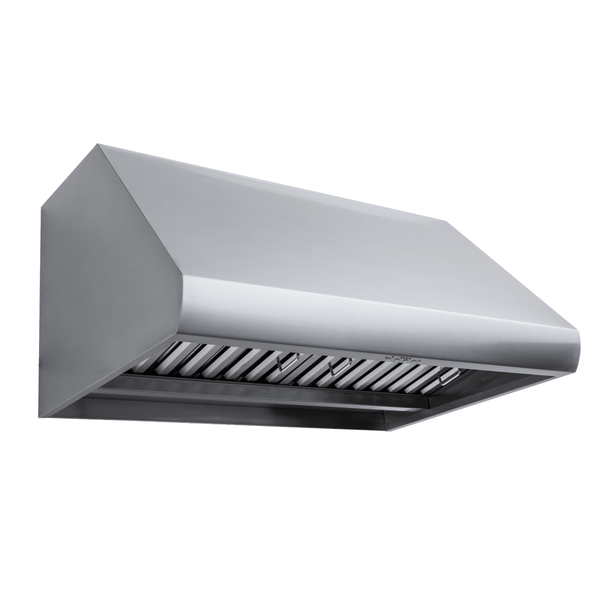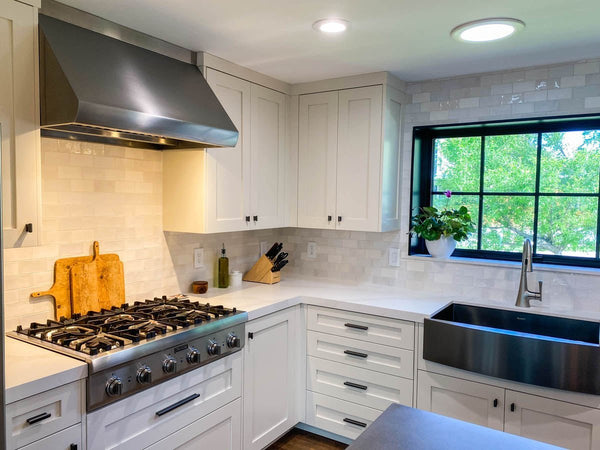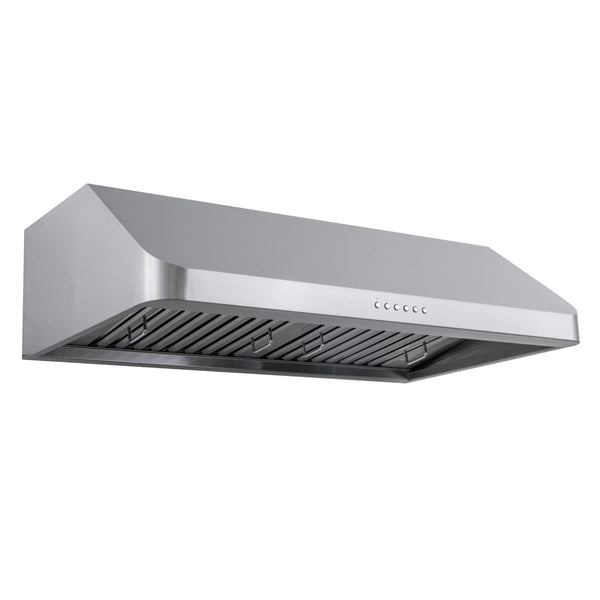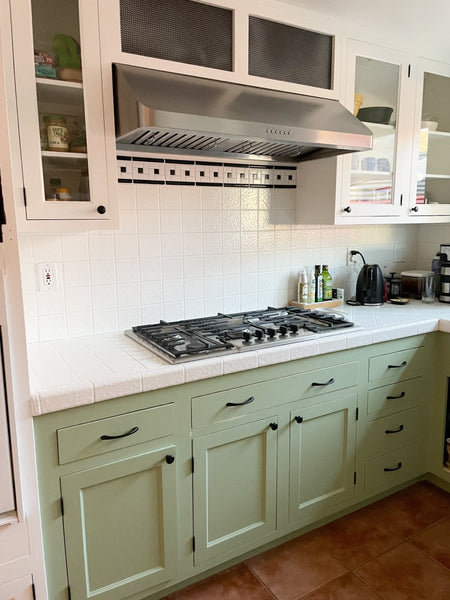When designing or renovating a kitchen, the range hood might not be the most exciting appliance to choose, but it's certainly one of the most important for your home's air quality and kitchen cleanliness. While browsing options, you'll encounter a fundamental choice: ducted or ductless range hoods. We'll explain why ducted range hoods are almost always the superior choice for most homeowners.
Table of Contents
What Exactly is a Range Hood?
Before diving into the ducted vs. ductless debate, let's clarify what a range hood actually does. A range hood is a ventilation system installed above your cooking surface (stove or cooktop) that captures:
- Cooking smoke and steam
- Airborne grease particles
- Cooking odors
- Heat
- Harmful combustion by-products (especially from gas stoves)
These contaminants are then either filtered and recirculated (ductless) or expelled outside your home (ducted).
Ducted vs. Ductless Range Hoods: The Fundamental Difference

Ducted Range Hoods
How they work: Connect to ductwork that vents air outside your home. They physically remove cooking by-products from your living space.
- Air is expelled outside completely
- Contaminants are removed from home
- Requires ductwork installation
- More effective ventilation
Ductless Range Hoods
How they work: Pull air through filters and then release the filtered air back into your kitchen.
- Air is filtered and recirculated
- Contaminants partially removed
- No ductwork required
- Limited effectiveness
This difference in operation creates significant performance gaps between the two types.

Why Ducted Range Hoods Are The Superior Choice
1Significantly Better Ventilation Performance
Ducted range hoods completely remove cooking byproducts (smoke, grease, odors, contaminants) from your home. This fundamental advantage cannot be overstated—no matter how good the filtration is in a ductless hood, it simply cannot match the performance of a system that physically removes contaminated air from your living space.
Fun Fact: A properly installed ducted range hood can remove up to 2000 CFM (cubic feet per minute) of air, while even the best ductless models struggle to effectively clean 50% of the CFM.
2True Odor Elimination
Ever cooked fish or fried foods and had the smell linger for days? With a ducted range hood:
- Cooking odors are expelled outside rather than partially filtered
- Strong smells don't migrate to other rooms or cling to fabrics
- Your home simply smells fresher after cooking aromatic meals
3Superior Grease Management
Cooking produces aerosolized grease particles that:
- Land on cabinets, creating a sticky film
- Accumulate on walls and ceilings
- Attract and trap dust
- Can be difficult to clean
Ducted range hoods remove this grease entirely, while ductless models attempt to trap it in filters, with varying degrees of success.
4Better Moisture Control
Steam from cooking introduces excess moisture into your kitchen that can:
- Damage cabinets over time
- Create conditions for mold growth
- Warp wooden surfaces
- Contribute to peeling paint or wallpaper
Ducted range hoods eliminate this moisture entirely rather than merely distributing it.
5Better Indoor Air Quality
For households with respiratory concerns, allergies, or asthma, ducted range hoods provide significantly better air quality benefits by completely removing cooking particulates rather than attempting to filter and recirculate them.
The Drawbacks of Ductless Range Hoods
1. Filtration Limitations
Ductless models rely entirely on filters to clean the air, which:
- Cannot capture all particulates, especially the smallest
- Lose effectiveness as they become saturated with grease
- Must be replaced or cleaned frequently to maintain even modest performance (typically every 3 months)
2. Not Actually Getting Full CFM Output
Many homeowners don't realize that the CFM (cubic feet per minute) rating on ductless hoods is somewhat misleading. Actual air movement is significantly reduced and effective filtration decreases as filters become dirty.
3. Higher Long-Term Costs
While the initial installation may be cheaper, ductless hoods often cost more over time due to:
- Regular replacement of specialized carbon filters
- More frequent cleaning requirements
- Potential damage to cabinets and surfaces that would be prevented by a ducted system
4. Limited Effectiveness for Heavy Cooking
For those who frequently:
- Use high-heat cooking methods
- Stir-fry or use woks
- Cook foods that produce significant smoke or strong odors
When Might a Ductless Hood Be Acceptable?
Despite their limitations, ductless hoods might be appropriate in very specific circumstances:
Where structural modifications aren't permitted by landlords or lease agreements
In buildings with preservation restrictions or architectural constraints
Where ducting installation is physically impossible or prohibitively expensive
For very occasional use, primarily reheating or minimal food preparation
A Few Key Notes
Here are some things to keep in mind for your ducted range hood:
Tip: Inline blower models - These can reduce noise while maintaining powerful ventilation, they are installed within your ductwork for quieter operation. Only available in our ProV and HE series.
Mandatory: Metal rigid ducting - this is a must when ducting your hood, flexible duct can be hazardous.
Tip: Ducting - always best and a more optimal choice for an efficient running range hood.
Mandatory: Roof or wall cap - You must use one of these caps when venting to the outdoors. Check out our roof cap we have available.
Conclusion: The Clear Advantage of Ducted Range Hoods
While ductless models might seem appealing due to simpler installation, the performance gap is simply too significant to ignore.
For most homeowners, the investment in proper ducted ventilation pays dividends in cleaner air, reduced cleaning requirements, and a more pleasant cooking experience for years to come. If you're building new or renovating, making ducting accommodation part of your design will be a decision you won't regret.
Need more info and help with ducted range hood systems?
Contact our team!